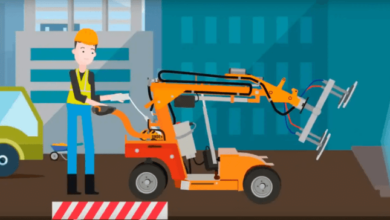Sound Transmission in Work Places

Noisy work environments can be a huge source of frustration and stress. They can affect your concentration levels, affecting the quality of your work. Thankfully, there are many ways to reduce the noise in your workplace. The purpose of this article is to explain what the stc ratings chart means. And how you can improve workplace acoustics by installing new wall coverings in an office space or a factory flooring project.
What is STC Rating?
Stc ratings chart is a rating system for sound transmission. It measures the amount of sound that passes through building materials. It is important for commercial and residential construction, and you can measure it in two ways:
- Numerically, by calculating the STC value based on laboratory testing
- Visually, by looking at a chart indicating how much sound should pass through different construction materials.
How can you install sound transmission in the workplace?
There are four main options to reduce sound transmission in your workplace.
Sound reducing materials
They absorb some of the sounds that come into space and convert them into heat energy. Install these products on walls and ceilings to absorb, or reduce noise transmitted through these surfaces.
Sound absorbing materials
Acoustic tiles are another option for reducing noise in an office environment by absorbing sounds before they travel through open spaces or between offices. They absorb low sound frequencies, so they cannot travel as far as high-frequency noises like voices. They’re available in many colors and patterns, so you can customize them to match your decorating scheme.
Sound blocking materials
The third way you can help prevent sound transmission within your workplace. It involves using acoustic barriers made from heavy materials. The materials are glass or concrete. It will block most outside noises from entering sensitive areas where people work together closely. These work areas include conference rooms where sensitive discussions take place frequently.
Importance of Sound Transmission in WorkPlaces
You may be wondering, “Why is this important?” Here’s why:
Sound transmission has a significant effect on the health and productivity of employees in work environments. It also affects their safety, reputation, and customers. In addition to being annoying, poor acoustics can lead to hearing loss when a loud noise is present for long periods.
This is especially true if you’re exposed to noise above 85 decibels (dB) for more than eight hours daily. In general, lower frequencies cause more damage than higher frequencies do. Low-frequency sound at work will cause more damage than higher-pitched sounds would cause by themselves. Even though their decibel levels might not seem very high, they could still have noticeable effects on your hearing over time.
Walls and Partitions Meeting STC Requirements
When you consider common building materials’ sound transmission class ratings, you’ll find that they’re not all created equal. Some materials absorb or block sound, while others pass it through. This is why it’s important to understand STC ratings when choosing materials for your walls and partitions, ceilings and floors, doors, windows, and other openings.
Ceilings and Floors Meeting STC Requirements
Ceilings and floors should be designed and constructed to meet the required STC rating. The STC rating of the ceiling or floor needs to be greater than the rating of the wall. It also needs to be greater than your door.
Doors, Windows, and Other Openings Meeting STC Requirements
The STC rating of a door, window, or other opening measures the sound reduction through a wall, ceiling, or floor. Testing products determine STC ratings in an acoustic laboratory to ensure that they meet specified standards for noise reduction.
Final Words
If you are looking for ways to reduce the noise in your workplace, we mentioned ways in this post. These are some of the best ways. Make sure you carry out all these steps with care and precision.





